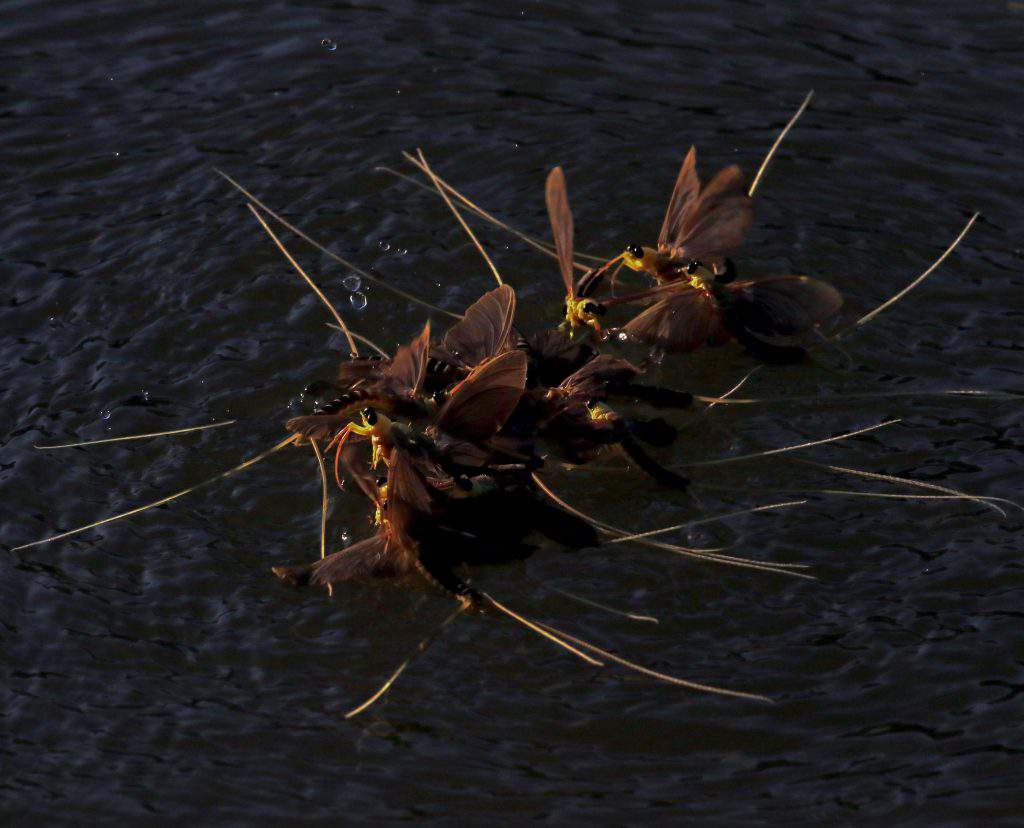River Tisza “bursted into blossom” on Friday and Saturday near Szolnok, and on Monday near Nagykörü as well, reports eletforma.hu. The Palingenia longicauda (or, in other terms, the Tisza mayfly) is the biggest specimen of the mayflies. In Hungarian, they are called “tiszavirág”, literally meaning Tisza-flower, thus, this period is usually referred to as when “the River Tisza bursts into blossom”. Nowadays, in the XXI. century, they can only be found in the Tisza and some of its tributaries. Their conservation value is around 32 EUR per specimen.
Tisza mayfly is a 8-12 centimetre long, colourful insect belonging to the order of mayflies (Ephemeroptera). Its wing-span can reach 6-7 centimetre. They lay their egg on the water‘s surface, then they sink down to the bottom of the river and drill themselves into the ground there. The larvae live primarily under river rocks and drill themselves in between rich vegetation and the sediment. The fully developed animal is widely known to only live for a short time. Their small head has short feelers, big complex eyes and three eyespots. Their mouth organ is vestigial. The sexually matured animals do not eat during their short life on the surface. They pump their digestive tract up with air so that they could fly easier. The fully developed mayflies cannot fly well, they are only flitting.

Source: MTI
A larva sheds 20-30 times a year on in a few months time, depending on what species it belongs to. The last shedding happens almost in its adult age. They can usually be observed during their swarming in the spring or early summer, when they are doing their courtship dance. The swarming of mayflies starts in the evening and lasts about three hours. As the overtue of the courtship dance, the three-year-old larvae living in the loam soil of the bank start to rise to the water’s surface. The gas piling up under their integument helps them getting up to the surface. The larva becomes a winged insect on the surface. First, the male subimagos appear, which fly to the bank and transform into imagos, able to mate there.
During the shedding, the animal is flightless, thus it is totally at the mercy of insectivorous birds. Mates transformed into imagos with long cercuses looking for the females fly right above the water.

Source: MTI
Females are able to mate right after leaving their larva-selves behind. After the mating, the female starts its compensatory flight above the river. It flies up-stream, 5-10 metres above the river. Then, further away it descends to the surface where it lays its eggs. The eggs sink down to the bottom of the river, then the larvae already hatched out drill themselves into the ground and live in those open grooves for three years. One colony like that can contain specimen from 10,000 to 100,000.
Once, these species were wide-spread all around Europe, but it has already disappeared from most parts of the continent. They live in a great number in Hungary in River Tisza and some of its tributaries.
Featured image: MTI
Ce: bm